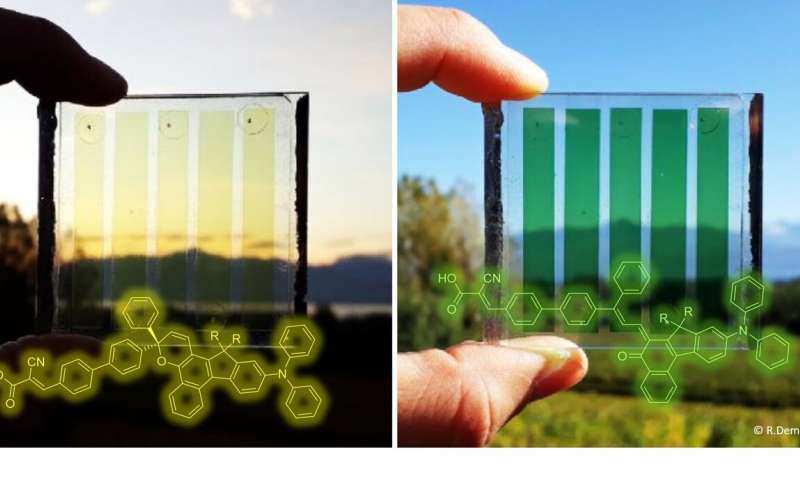HOME
Dye-sensitized solar cells that adapt to different light conditions

Solar cells made of semi-transparent photovoltaic (PV) materials typically have a fixed optical transmission, which results in either high transparency or high efficiency, but rarely both. In order to perform optimally when integrated on buildings, however, they should be able to generate electricity efficiently, while also changing how much they transmit light based on the intensity of natural light in their surroundings.
Researchers from CEA at Université Grenoble Alpes-CNRS, Solaronix and Universidad Pablo de Olavide proposed a strategy to fabricate solar cells that can adapt to changing light conditions, while also achieving high power conversion efficiencies. This strategy, outlined in a paper published in Nature Energy, entails sensitizing the cells using dyes that they developed that enable a change in color when exposed to light.
"In 2014, we were working on the development of organic dyes for use in semi-transparent, dye-sensitized solar cells (DSSCs) with Solaronix, for building integrated photovoltaics," Renaud Demadrille, one of the researchers who carried out the study, told TechXplore. "One of our dyes was selected for the fabrication of orange panels installed in the solar facade at the EPFL conference center." After integrating solar cells they developed in real-world settings and evaluating their performance, the researchers realized that while they were aesthetically pleasing, their manufacture unavoidably resulted in a trade-off between transparency and power efficiency. This is far from ideal, especially if the cells are to be incorporated on windows or other surfaces that are typically transparent.
"We realized that, ideally, semi-transparent solar cells should generate electricity while offering the comfort for users to self-adjust their light transmission with the intensity of the daylight," Demadrille said. "This self-adjusting feature could help mitigate the amount of light (when the cells are exposed to full sun) and the temperature of buildings with large windows and/or glass facades. We thus decided to develop a new class of dyes that that can enable these properties." The solar cells presented by Demadrille and his colleagues were fabricated using photochromic dyes. When they are exposed to light, the absorption properties of these dyes are altered, which results in a change of color. When solar cells are sensitized using these dyes, they acquire the same color-changing properties.
News Source